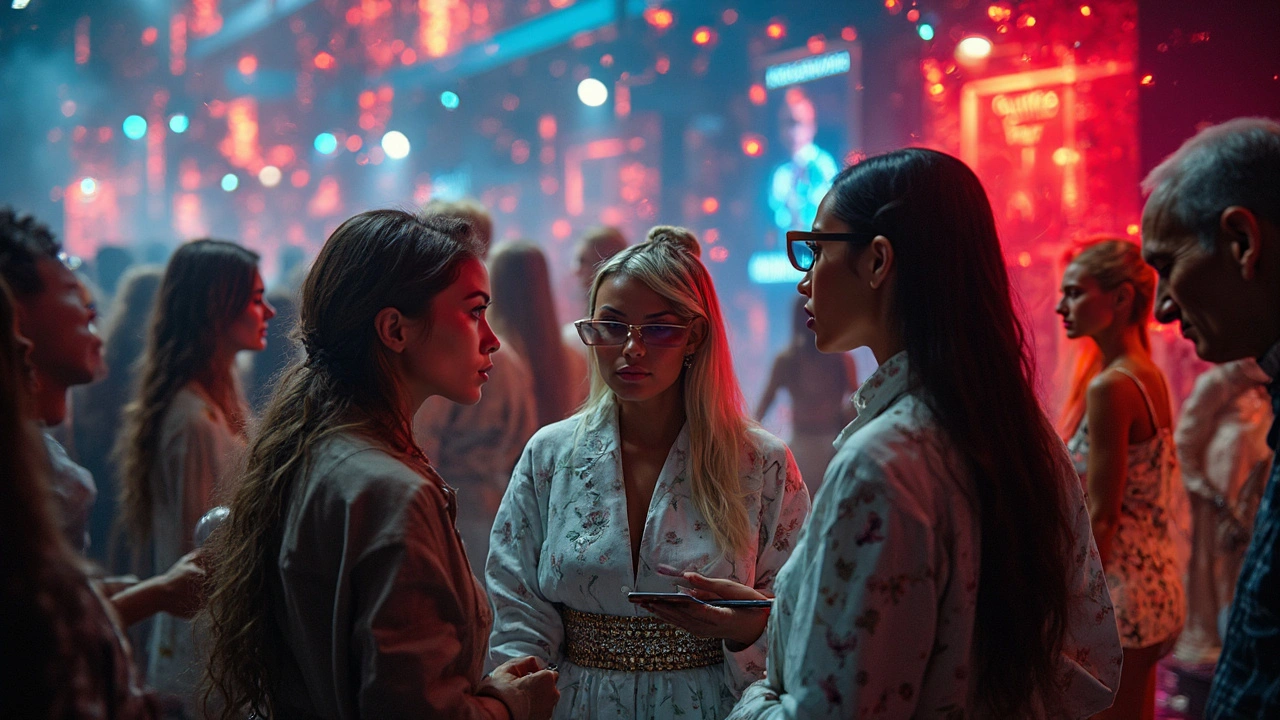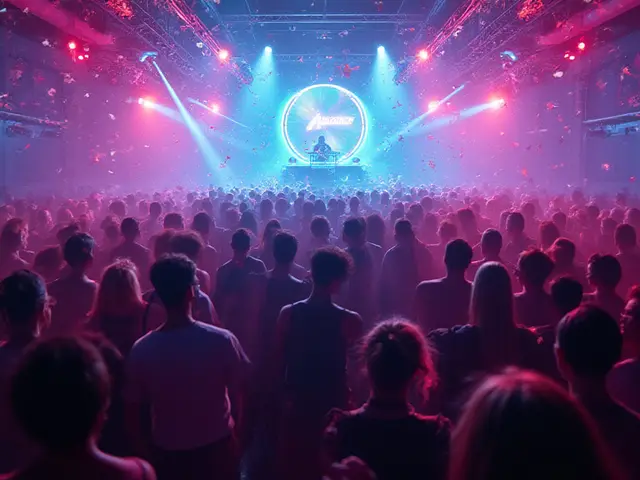
If you think supermodels are just tall, slim women from Paris or New York, you're way behind. Today’s hottest faces in fashion might come from anywhere, get discovered on TikTok, and have more control over their careers than ever before. The old ways—runways, glossy magazines, and strict scouts—are getting a makeover.
Nowadays, brands want real people with big personalities, massive followings, and a story to tell. It’s not just about fitting into a size two outfit. Now, it’s about your style, how you connect online, and what you stand for. Some of the new faces popping up on billboards used to be unknowns scrolling through Instagram in their bedroom last year.
If you’re curious about how to break into this world, or you just want to know where the industry is headed, you’re in the right place. In the sections ahead, you’ll see how social media is flipping the script, why diversity is finally being celebrated, and what skills matter most if you want to catch the eye of top brands.
- Redefining the Supermodel
- Social Media: The New Runway
- Diversity and Representation
- Technology Meets the Catwalk
- Branding Yourself: Tips for Success
- What’s Next for Supermodels?
Redefining the Supermodel
Not too long ago, a supermodel was basically someone who walked the world's biggest runways, graced magazine covers, and had a deal with a high-end beauty brand. Names like Naomi Campbell and Cindy Crawford ruled the 90s and set what felt like impossible beauty standards. Fast forward to today, and the idea of a supermodel is way broader—and honestly, way more interesting.
Fashion leaders are now realizing that fans connect more with models who feel like real people, not distant icons. Gigi Hadid, for example, blew up as much for her social media personality as for her walk at Fashion Week. And the door's wide open: You don’t have to be super tall or super skinny to break through. Nowadays, supermodels might have gaps in their teeth, be covered in tattoos, or come from countries the industry used to ignore. Just look at Paloma Elsesser, who’s rocked Vogue covers and runway gigs despite not being a traditional runway size.
"People want relatability. They want to see themselves in the people representing these brands," says casting director James Scully in an interview with Vogue.
Now, it’s totally normal to see models who stand for body positivity, gender diversity, or different backgrounds. Back in 2016, only about 17% of models cast during fashion month were nonwhite. By 2023, that number jumped to almost 50%, showing just how fast things are changing.
| Year | % Nonwhite Models (Fashion Month) |
|---|---|
| 2016 | 17% |
| 2023 | 48% |
Even modeling agencies are switching things up. Instead of focusing only on height and measurements, scouts are checking for social media chops, personal projects, or unique style. If someone can go viral for their look or for something they believe in, that’s gold for a brand.
Long story short: If you want to make a mark in the fashion industry, being yourself is finally starting to pay off.
Social Media: The New Runway
The days when supermodels had to wait for a call from a fashion house are pretty much over. These days, social media platforms, especially Instagram and TikTok, have totally changed how models get noticed. If you’ve got the look, the drive, and a solid online style, you could be getting DM’d by brands instead of chasing after agencies.
Take Kendall Jenner and Gigi Hadid as prime examples. Sure, they walked runways, but what gave them major clout was their huge Instagram followings. It’s become kind of a basic requirement now—almost every new face breaking out in the fashion industry has built their audience online first.
Not just that, modeling agencies and big brands are constantly scouting on social for fresh talent. A 2023 Statista report showed that over 60% of fashion-related brand campaigns now look for models with over 100,000 followers. Having reach—and being able to engage an audience—makes a huge difference when a brand is choosing between two faces.
| Platform | % of Models Discovered |
|---|---|
| 45% | |
| TikTok | 27% |
| Other (YouTube, Twitter, etc.) | 10% |
Don’t just focus on photos, though. Short-form videos and livestreams help show off personality. Creative posts grab attention fast—viral challenges or stylish behind-the-scenes clips can get thousands of views overnight.
- Post professional shots but mix them with everyday moments so followers connect with you.
- Use hashtags smartly—#modelsearch and #newface are flagged by agencies.
- Engage by replying to comments and tagging brands when you wear their stuff. Brands notice that.
If you’re dreaming of a modeling gig, think of your socials as your new portfolio. Don’t worry if you don’t look like the models from 10 years ago. The future is about what you bring online—your personality, your authenticity, your style, and how you connect. The new runway is digital, and it’s open 24/7 for anyone bold enough to step up.
Diversity and Representation
The face of supermodels is not what it used to be. Ten years ago, major runways and magazines pushed one idea of beauty—usually young, thin, and white. Now, the fashion industry is finally waking up. In the last five years alone, there’s been a huge boost of models from all kinds of backgrounds getting prime spots in global campaigns.
Take Adut Akech, who grew up in a Kenyan refugee camp before landing the cover of Vogue, or Jillian Mercado, a model with muscular dystrophy who’s fronted big campaigns for brands like Diesel. Their success has sent a message: different looks and stories actually sell. Brands realize their audience wants to see people who look like them—not just in terms of skin color but also size, ability, age, and gender identity.
Fashion shows at major events like New York and Paris Fashion Week have numbers to back it up. In 2024, nearly half the models cast during these shows were people of color, and more plus-size and nonbinary models walked than ever before. That used to be rare. See for yourself:
| Fashion Season | % Models of Color | # Nonbinary Models |
|---|---|---|
| Spring/Summer 2018 | 32% | 2 |
| Spring/Summer 2024 | 48% | 23 |
It’s also way easier for people from underrepresented groups to break through using social media. Sometimes the biggest viral campaigns are by models who aren’t represented by big agencies at all. If you’re interested in a fashion industry career, start by owning your unique features—don’t hide what makes you stand out. Plenty of new faces got noticed because they shared their real life, not because they changed to fit old rules.
One tip: search brands and agencies that really support diversity in modeling. You want to work for teams who value all kinds of talent, not just ones hopping on the trend. If you spot a brand including people with visible disabilities, older models, or a wide range of ethnic backgrounds, that’s a good sign they take modern representation seriously.

Technology Meets the Catwalk
Tech is totally changing how supermodels work and how we see fashion. You probably saw those wild virtual runways during the lockdown—no crowds, just models walking from their own homes with slick backdrops added in later. Big names like Balenciaga and Hanifa have even held digital-only fashion shows. In 2023, Hanifa’s 3D fashion experience racked up millions of views online, giving a taste of what’s next.
Then there’s AI. Agencies and brands use algorithms to spot new faces on social media. Some agencies rely on software that scans Instagram or TikTok to see who’s trending, picking up on people who might not even realize they’re model material. This tech has led to a wider mix of supermodels than ever before, with more diversity and new types of personalities breaking into the fashion industry.
Don’t ignore the rise of digital-only models. Basically, these are computer-generated, but they look real and have huge followings—think Lil Miquela, who’s landed campaigns for Prada and Calvin Klein. She’s not even real, but millions follow her. Top brands are using these avatars for campaigns when they want to go viral or test out crazy ideas without risking real-world backlash.
Virtual fittings and AR (augmented reality) tools have made life easier for everyone. If you want to try clothes on without stepping in a store, brands like Gucci now offer AR options where you can "wear" sneakers using your phone’s camera. For future fashion, this means shoppers and models can interact with clothes in totally new ways.
Let's throw in some numbers so it's not just talk:
| Tech Trend | Fashion Adoption (2023) |
|---|---|
| 3D Virtual Shows | 45% of top brands |
| Digital-Only Models | 18% of major campaigns |
| AI Model Scouting | 62% of top agencies |
| AR Shopping Tools | 26% of luxury brands |
For anyone dreaming of becoming a supermodel or building a personal brand, you can’t ignore these trends. Learn how to use tech to your advantage—build your presence on new platforms, stay sharp with what’s coming next, and don’t be afraid to experiment with digital content. That combo is the secret sauce now.
Branding Yourself: Tips for Success
Standing out as a supermodel today isn’t just about having a great look anymore. Personal branding is everything. If you want brands and scouts to notice you, you’ve got to build an identity people remember—and that means thinking like a business from the start.
The biggest names in the fashion industry know how to leverage their style, story, and values. Take Gigi Hadid or Adut Akech: their social feeds aren’t just full of backstage shots—they show personality, interviews, and posts about causes they care about. Brands love this because fans are more likely to trust and follow a model they feel they know personally. Turns out, 75% of agencies now check social media before signing new faces, and most brands want to work with people whose values match their own.
If you’re hoping to follow their path, here’s what works:
- Decide on your vibe. Are you athletic, artsy, casual, or high fashion? Stick with a style, but let your real self shine through.
- Build your feed. Post good-quality pics—don’t go crazy with filters. Show your work, but also your daily life, hobbies, and what you care about. Authenticity is a big deal right now.
- Engage your followers. Answer comments, share behind-the-scenes stuff, and let people see the real you. It’s not just about likes; it’s about building a true community.
- Work with photographers. Collaborate with both pros and up-and-comers. The more variety in your portfolio, the more chances you’ll have to catch someone’s eye. Always credit your team!
- Stay active. Posting regularly and keeping your content fresh helps you pop up in search results and on brand radars. Skipping months at a time makes you easy to forget.
- Learn simple editing. Basic clean-up skills help your portfolio look sharp without making you look fake.
And for those thinking about stepping into the future fashion wave, consider the kinds of brands and campaigns you want to work with. Are you into sustainable fashion, athletic wear, tech-inspired looks? Tailor some of your posts around those niches. Real talk: finding your lane makes it easier to get noticed by the right people.
Check the table below for a quick breakdown of what top supermodels usually share online and what gets them the most engagement:
| Type of Content | Average Engagement Rate |
|---|---|
| Personal Stories | 5.2% |
| Behind-the-Scenes | 4.8% |
| Runway/Editorial Shots | 3.7% |
| Brand Partnerships | 2.9% |
| Charity & Causes | 4.4% |
Point is, if you want to crack the modeling trends code, don’t just post the perfect selfie—show the world your story, your quirks, and your voice. That’s what makes a future supermodel stand out now.
What’s Next for Supermodels?
The future of supermodels isn’t going to look like the 1990s. Tech, social change, and a demand for authenticity are shaking things up faster than you can say ‘catwalk’. Forward-thinking brands are dropping the idea of a ‘one-size-fits-all’ model. In its place? A mashup of body types, backgrounds, and personalities that actually reflect people you’d meet in real life.
Take a look at casting calls from top agencies in 2024—what stands out is their focus on raw personality, lived experiences, and online reach. In fact, IMG Models reported that over 60% of their new signings last year had a social media following of 50k or more. If you think it’s just about looks, think again: brands want a story and a connection to real fans.
The use of tech in fashion isn’t slowing down either. Virtual castings, 3D body scans, and even AI-driven scouting are becoming the norm. During Paris Fashion Week in 2024, one in five brand presentations included a digital avatar or virtual model. This means aspiring supermodels need to get comfortable in front of both a real and virtual camera.
- Social Media Savvy: Models who build a brand on platforms like Instagram or TikTok have an edge. You don’t need millions of followers, but you do need active, engaged fans.
- Embracing Diversity: From different body shapes to cultural backgrounds, the industry is finally opening its doors wider. Unique stories and perspectives actually help you stand out now.
- Learning Tech Basics: Working with virtual runways or collaborating on AR projects is in demand. Even understanding lighting or basic video helps you stand out to casting agents.
Want a glimpse of how the fashion industry is evolving? Check out the numbers below showing what agencies now look for in new talent.
| Trait | Percentage of Agencies Seeking |
|---|---|
| Strong Online Presence | 67% |
| Experience with Virtual/AR | 42% |
| Diversity & Inclusion | 74% |
| Traditional Runway Experience | 40% |
So if you’re eyeing the next wave of modeling trends, think less about perfect bone structure and more about what makes you different. Keep posting, learn a bit about digital media, and don’t shy away from what sets you apart. The new supermodels are shaping the scene, not just walking it.



